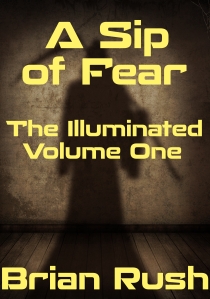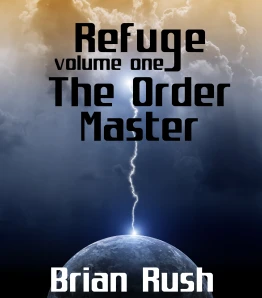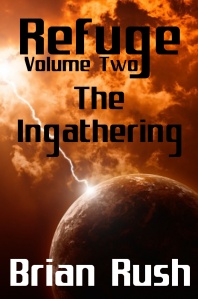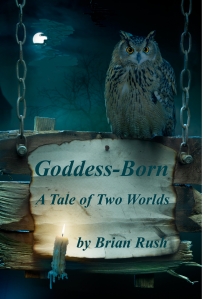I mentioned the two ways of thinking referred to as logos and mythos in earlier posts, but the concept needs more exploration, I think. It lies at the heart of myth-making and therefore of both fantasy writing and spirituality.
Logos and mythos are both types of thinking that employ symbols: language, pictures, and mathematics for the most part (although mythos also employs music, and for some very limited purposes so does logos). A symbol is one thing that refers to another thing. For example, the letter T in English refers to a sound made by snapping the tip of the tongue against the palate just behind the upper teeth while exhaling voicelessly. The word “cloth” is also a symbol. It refers to a type of material made from woven plant, animal, or synthetic fibers and used to make clothing and other items. Both logos and mythos employ symbols to think with. They manipulate symbols, put them in different combinations allowed by the rules and from this generate new ideas.
As far as symbols are concerned, the main difference between logos and mythos is this. In logos, each symbol has one and only one referent. The more formal the logical discipline, the more perfectly true this becomes. In science and mathematics, which are the most formal of all logical disciplines, each term must be explicitly defined so that there can be no ambiguity about exactly what it is referring to. As long as you understand the definitions and can follow the reasoning, there can be no fuzziness, no way to misconstrue what is said. Even if it’s something like imaginary numbers or quantum mechanics that defies intuitive comprehension, you can still follow the mathematical reasoning and understand what is being said that way. For the purposes of logos, this one-to-one correspondence of symbol with referent is very important. It’s a large part of what allows logos to function.
In mythos, each symbol has more than one referent. In fact, each symbol has an infinite number of possible referents. The goal in mythos is not to communicate simple, linear truths precisely and without ambiguity as it is in logos, but to open the doorways and windows of the imagination and expand the mind. The truths with which mythos is concerned cannot be communicated, they can only be discovered, and discovery requires that the mind be pushed out of its accustomed, habitual pathways. In mythos, a symbol is not a tool for precise, unambiguous communication of easily-comprehensible truth, as it is in logos, but rather it is a tool for connecting ideas that may have no logical and obvious connection and so causing a person to think, feel, and imagine in new ways.
Why these two radically different ways of using symbols? Because each serves a completely different purpose. The purpose of logos is, in the end, technology. All of its questions are of the nature of “how does it work?” What is the best way to describe this or that natural process, so that we can effectively alter it if we want to without making a ghastly mess of things? (I realize that in applying knowledge gained by logos we often have made a ghastly mess of things; however this comes from acting before our logos-acquired knowledge is sufficiently complete. It’s a problem caused by a deficit of mythos, not by an application of logos per se.) The purpose of mythos is not technology but understanding, and that in terms of meaning more than mechanics. Logos asks how. Mythos asks why. The two should never be in conflict, as they aren’t approaching the same questions and therefore can never provide conflicting answers.
I can best explain how mythos functions with examples, and I’m going to choose three from three different religions.
First, from Islam, the phrase in Arabic pronounced (roughly) “la ilaha ila Allah” and usually translated as “There is no god but God.” Part of this is straightforward enough, but what precisely is a “god”? Clearly the shadada or testament of faith is proclaiming that there is only one of these entities, whatever it is, but “god” could mean any number of different things. We can begin the way most Muslims think of this phrase, as saying that people should worship only one deity, and on this basis they object to polytheism, but even orthodox Muslim thinkers take it a step further and say that one should not worship or revere anything above God — money, pleasure, and power being among the most common “other gods.”
The phrase can also be interpreted to mean that however different the deities worshiped by various religions and cultures may seem at first glance, all of them are One — literally, there is no god but God, and all (seeming) other gods really are God. This is of course not an orthodox Muslim interpretation of the words, but it is one that follows from their possible meanings.
Finally, let’s recognize that, as Muslim teachers observe, anything in the world can be worshiped as a god. That being the case, all things really are God (as there is no god but God), and God is all the world. (This by the way is how the Sufi usually interpret the phrase.)
Which of these is the “real” meaning of the Shadada? There is no one “real” meaning; that’s the point here. To assign it one “real” meaning would be to improperly subject it to the rules of logos, when it properly belongs in mythos.
Second example, from Christianity, words attributed to Jesus: “I am the way, the truth, and the life. No one comes to the Father but by me.” Now, the way that Christians have often interpreted this is to say that only by being a Christian can one find God — a claim that is of course absurd, and easy enough to disprove — and in fact Jesus made no mention here of Christianity (which did not yet exist) nor of any other religion; he referred only to himself. Setting that aside, Jesus is clearly saying here that nobody comes to God except “by me.” What does that mean?
“By me” could mean, “by following my teachings.” Or, it could mean, “by devotion to me as the Son of God.” Or, it could mean, “by what I’m going to do for you — it’s not something you do.” All of these are meanings appropriate to the words used.
Here’s another possibility. In other statements, Jesus often emphasized that what he was, others are, too; that we are all children of God, all one with God, all capable of the same miraculous feats as Jesus himself and more. Also we should recognize that this was a spiritual teacher much given to being cryptic. And so another possible meaning of “by me” is “the way that I have done,” with “me” here referring to the union of God and man which Jesus was — as are we all, the difficulty being to become aware of this.
As with the Shahada, this claim of Jesus does not have one single meaning, but all of the ones listed above and more.
Finally, from Wicca, the words of the Goddess in the Charge: “I have been with you from the beginning, and I am that which is attained at the end of desire.”
Most simply and simplistically, the Goddess is here proclaiming her eternal nature and promising to be with us to the end and beyond. But look at the words chosen: “end of desire.” And consider the words from the Charge that come before these: “If what you seek you find not within yourself, you will never find it without.” This gives a different depth to “I have been with you from the beginning,” suggesting that she is within us, not merely with us.
“At the end of desire” carries a possible meaning of death, but also of attainment of the same goal as in Buddhism, the overcoming of desire. The Goddess is what we find when we achieve “the end of desire.” But what is that? Without desire, there is no action, not even the act of perceiving, and without perceiving there is no world. So “I am that which is attained at the end of desire” can also mean, “I am what the world is when it comes to its end.”
As with the Muslim and Christian examples above, there is no single “right” interpretation of these words from the Charge of the Goddess. The point is not to discover a meaning which can then be conveyed to others in different words. The point is to make the journey of discovery yourself, allowing your mind to be opened and expanded. That’s the way that mythos works, and in all cases the process of discovery is more important than what is discovered.







A thoughtful essay, and I really enjoyed the examples of Islam, Christianity and Wicca. I was raised in the Christian church and remember all the quoting of the verses at the beginning of the Gospel of John. RSV “(1)In the beginning was the Word, and the Word was with God, and the Word was God….(14)And the Word became flesh and dwelt among us, full of grace and truth; we have beheld his glory, glory as of the only Son from the Father…(16)And from his fulness have we all received, grace upon grace…(17)For the law was given through Moses; grace and truth came through Jesus Christ.” Word translates as Logos I believe, but this is such a Mythos piece of writing. Like you say in your essay here, the no one comes to God except “by me.” Me is the Word, which is Logos. Jesus is the HOW I guess, according to the Christian Mythos. As you say, whatever that means!:)
“Logos” is indeed the Greek word meaning “word,” and it’s the Greek word that appears in that passage in the Gospel of John in the original Greek. But you’re right, its use here is mythic. In terms of logos, a person can’t be a word; that’s just nonsense. But in a mythic sense, a person can be the Word of God, an expression of the Mind of God, or of the divine will. There are connotations here of magic words/incantations, of words as an enactment of intent, and other wonderful things.